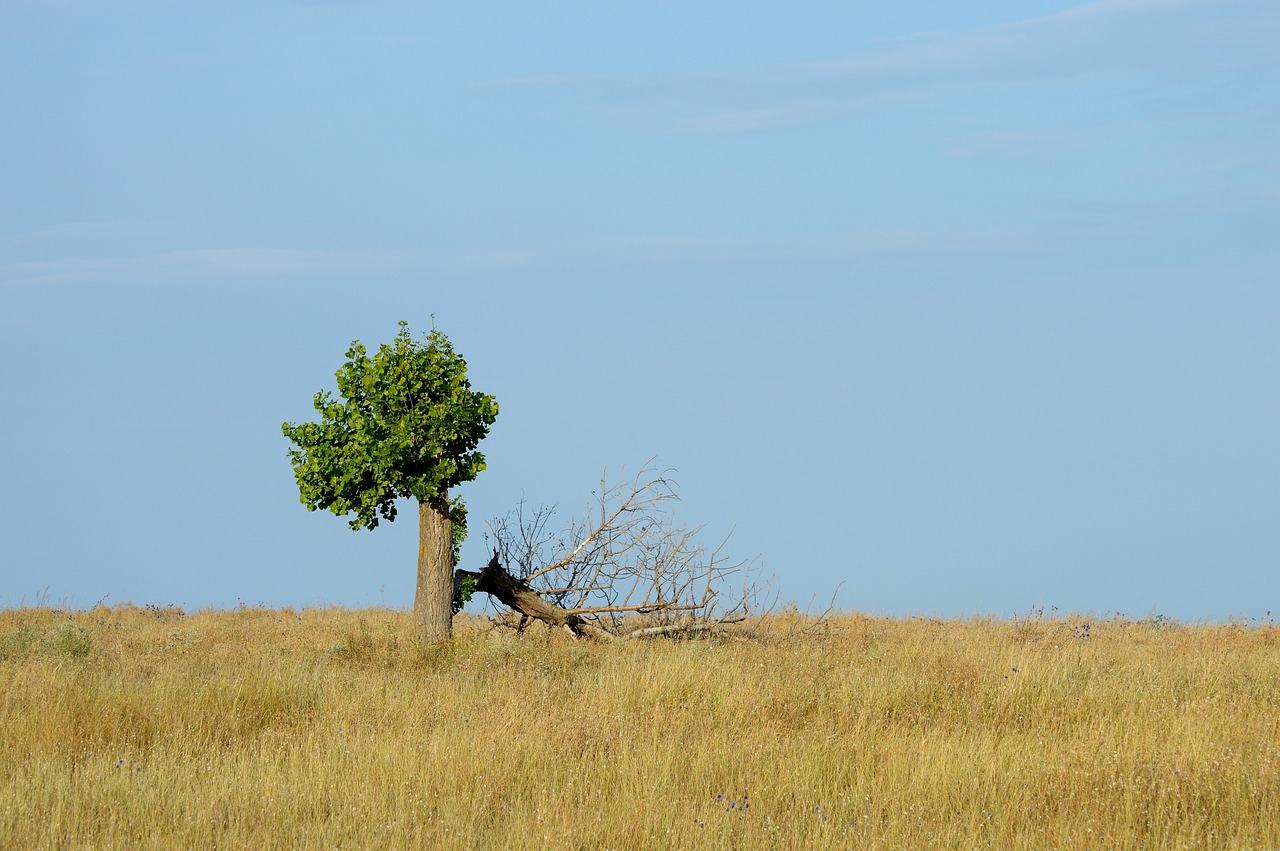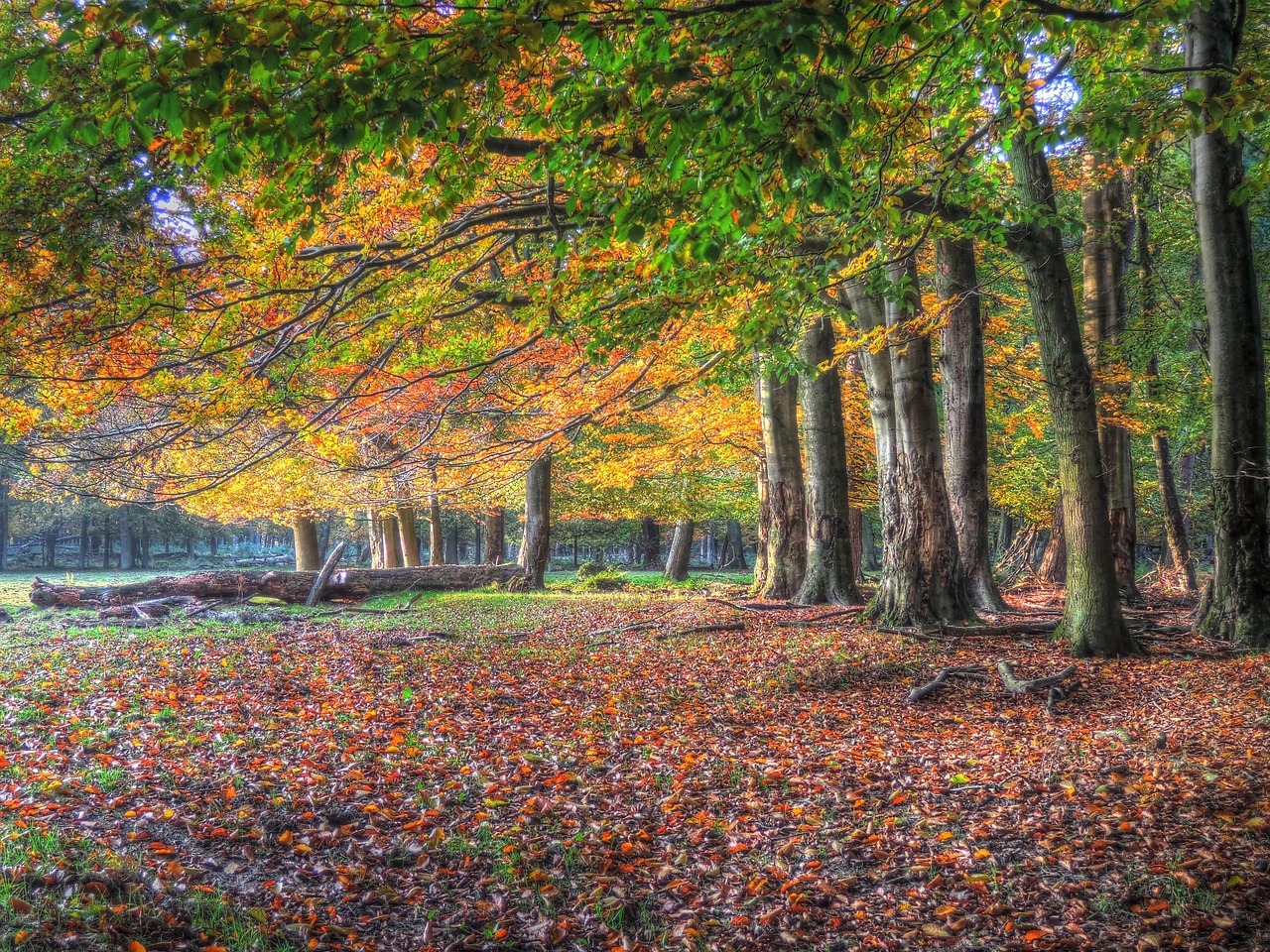After improper pruning, trees can experience stress and damage. Recovery depends on the severity of the cuts, tree species, and environmental conditions. Proper care, including watering and monitoring for disease, can help trees regain health over time.
Pruning is an essential practice in tree care. It promotes healthy growth, improves structure, and enhances aesthetics. However, when done incorrectly, it can lead to severe consequences for the tree. Improper pruning can result in wounds that expose the tree to pests and diseases, causing long-term damage or even death. Understanding how trees recover from such practices is vital for anyone involved in tree maintenance.

When a tree is improperly pruned, it undergoes a stress response. This response varies significantly based on several factors, including the type of tree, the extent of pruning, and the environmental conditions surrounding the tree. For instance, deciduous trees may react differently compared to evergreen species.
Understanding Tree Anatomy and Recovery Mechanisms
To comprehend how trees recover after improper pruning, it is important to understand their anatomy and recovery mechanisms. Trees consist of various parts that play distinct roles in their growth and health:
| Tree Part | Function |
|---|---|
| Roots | Absorb water and nutrients; anchor the tree. |
| Trunk | Supports the tree; transports nutrients and water. |
| Branches | Provide structure; hold leaves and flowers. |
| Leaves | Conduct photosynthesis; produce energy. |
The tree’s vascular system plays a crucial role in recovery. This system consists of xylem and phloem tissues that transport water, nutrients, and sugars throughout the tree. When a tree is pruned improperly, the vascular system can be damaged. This can hinder the tree’s ability to transport essential resources, leading to further complications.

In response to injury, trees initiate a process called compartmentalization. This involves the formation of barriers to limit the spread of decay and protect healthy tissues. The tree produces specialized cells that help seal off damaged areas. However, if the pruning is excessive or too severe, compartmentalization may not be sufficient to protect the tree.
Factors Influencing Recovery
The recovery of a tree after improper pruning is influenced by various factors:
- Tree Species: Different species have varying resilience levels. Some may recover quickly, while others may take longer or struggle to survive.
- Extent of Damage: The severity of the cuts made during pruning significantly affects recovery time. Larger cuts that remove major branches can cause more stress than minor trims.
- Environmental Conditions: Factors such as soil quality, moisture levels, and weather conditions play a key role in recovery. Adequate sunlight and water are essential for healing.
- Care After Pruning: Proper post-pruning care is crucial. This includes watering, mulching, and monitoring for pests and diseases.
Identifying signs of stress in trees is crucial for effective recovery. Common symptoms include wilting leaves, discoloration, dieback of branches, and increased susceptibility to pests. Early detection can lead to timely interventions that enhance recovery chances.

Best Practices for Supporting Tree Recovery
To support a tree’s recovery after improper pruning, certain best practices should be followed:
- Watering: Ensure the tree receives adequate water during dry spells. This helps reduce stress and aids recovery.
- Mulching: Apply mulch around the base of the tree to retain moisture and regulate soil temperature.
- Pest Management: Monitor for pests and diseases that may take advantage of the tree’s weakened state. Early treatment is essential.
- Avoid Further Pruning: Refrain from additional pruning until the tree shows signs of recovery. Further cuts can exacerbate stress.
Education on proper pruning techniques is also vital for preventing future issues. Knowledgeable pruning helps maintain tree health and aesthetics while reducing the risk of damage. It is beneficial for both professional arborists and homeowners to understand the principles of proper cutting techniques to avoid mistakes that could lead to long-term damage.
Your attention to detail when caring for trees can mean the difference between a thriving plant and one that struggles after improper pruning. By understanding how trees recover and what factors impact their health, you can take steps to ensure they bounce back stronger than before.

Signs of Stress in Trees
After improper pruning, it is essential to monitor trees closely for signs of stress. Recognizing these symptoms early can help you take necessary actions to support recovery. Trees that are under stress may exhibit various physical and behavioral changes. Understanding these changes is crucial for effective tree management.
Common Symptoms of Stress
Here are some common signs that indicate a tree may be suffering from stress due to improper pruning:
- Wilting Leaves: Leaves may droop or wilt, indicating that the tree is not receiving adequate water or nutrients.
- Discoloration: Yellowing or browning leaves can signal nutrient deficiencies or damage to the tree.
- Dieback: Branches may start to die back, particularly at the tips. This can be a sign that the tree is unable to sustain its foliage.
- Pest Infestation: A stressed tree is more susceptible to pests. Look for signs of insect activity, such as holes in leaves or bark.
- Mushroom Growth: Fungal growth at the base of the tree may indicate internal decay and should be addressed immediately.
If you notice any of these symptoms, it is vital to take action promptly. Delaying intervention can lead to further decline and may even threaten the tree’s survival.
How Trees Heal
Trees have remarkable abilities to heal from injuries, including those caused by improper pruning. The healing process involves several stages and mechanisms that work together to restore the tree’s health. Understanding how trees heal can provide insights into how to assist them during recovery.
Compartmentalization Process
The primary mechanism by which trees heal is called compartmentalization of decay in trees (CODIT). This process involves creating barriers to limit the spread of decay and pathogens. The main stages of compartmentalization include:
- Wound Response: When a tree is pruned, it initiates a wound response. This includes producing chemicals that help seal the area and prevent infection.
- Formation of Barriers: The tree forms barriers around the wound site. These barriers are formed from specialized cells that help compartmentalize damaged areas.
- Regrowth: As the tree continues to grow, it may produce new tissues around the wound. This regrowth helps cover and protect the damaged area over time.
The effectiveness of the compartmentalization process depends on several factors, including the tree species, the size of the wound, and environmental conditions. While some trees can compartmentalize effectively, others may struggle, especially if the damage is severe.
Nutrients and Watering for Recovery
Proper nutrition and watering are critical for supporting a tree’s recovery after improper pruning. Ensuring that your tree has access to the right nutrients can enhance its ability to heal and grow.
Essential Nutrients for Trees
Here are some key nutrients that play vital roles in a tree’s recovery:
- Nitrogen: Promotes leaf and shoot growth, essential for recovering from stress.
- Phosphorus: Supports root development and energy transfer within the plant.
- Potassium: Enhances overall plant health and disease resistance.
- Calcium: Important for cell wall structure and stability.
- Magnesium: Essential for photosynthesis and chlorophyll production.
Fertilizers can be used to provide these nutrients, but caution is necessary. Over-fertilizing can stress the tree further, so it is best to follow recommended guidelines based on soil tests.
Watering Techniques
Proper watering techniques are also crucial for recovery. Here are some guidelines to follow:
- Deep Watering: Water deeply but infrequently. This encourages deep root growth and helps the tree access moisture more effectively.
- Avoid Overwatering: Ensure that there is good drainage to prevent root rot. Overwatering can further weaken an already stressed tree.
- Mulching: Apply organic mulch around the base of the tree. This helps retain moisture in the soil and reduces competition from weeds.
The right balance of nutrients and water will significantly contribute to a tree’s ability to recover from improper pruning. Monitoring soil moisture levels and adjusting care routines according to weather conditions will help maintain optimal growing conditions.
Pest and Disease Management
A stressed tree is particularly vulnerable to pests and diseases. Implementing proper pest management strategies can protect your tree and aid its recovery process.
Pest Identification and Control
Identifying pests early is crucial for effective management. Common pests that may target stressed trees include:
- Aphids: Small insects that suck sap from leaves, causing wilting and yellowing.
- Caterpillars: Larvae of moths and butterflies that can defoliate trees quickly.
- Borers: Insects that tunnel into branches or trunks, leading to structural damage.
- Scale Insects: These pests attach themselves to branches or leaves and feed on sap.
If you notice signs of pest infestation, consider using organic pest control methods first. Insecticidal soaps or neem oil can be effective without harming beneficial insects. Always follow application instructions carefully.
In addition to pest management, keeping an eye out for diseases is equally important. Fungal infections, like powdery mildew or root rot, can threaten a stressed tree’s health. Addressing these issues promptly with appropriate treatments can improve recovery outcomes.
Caring for trees after improper pruning requires vigilance, knowledge, and proactive measures. By closely monitoring signs of stress, understanding how trees heal, ensuring proper nutrition and watering, and managing pests effectively, you can help your trees recover successfully.
Long-Term Care for Trees After Improper Pruning
Once immediate recovery measures have been implemented, ongoing care is essential for the long-term health of trees that have suffered from improper pruning. Establishing a routine that supports the tree’s recovery and growth can significantly enhance its resilience to future stressors.
Monitoring Growth and Health
Regular monitoring of the tree’s growth and overall health is crucial. Keeping an eye on various aspects of the tree can help you identify potential problems early. Here are some key indicators to observe:
- New Growth: Watch for the emergence of new leaves and shoots. Healthy trees should show signs of new growth during the growing season.
- Leaf Color: Monitor for vibrant green leaves, which indicate good health. Discoloration may signal underlying issues.
- Branch Structure: Inspect branches for signs of dieback or weakness. Ensure that new growth is forming in a balanced manner.
- Root Health: If possible, check the root zone for any signs of distress, such as excessive moisture or fungal growth.
By staying vigilant about these indicators, you can address any issues before they escalate, ensuring the tree remains on the path to recovery.
Soil Health and Fertility
The condition of the soil surrounding a tree plays a significant role in its recovery and overall health. Improving soil health can enhance nutrient availability and support robust root development.
Assessing Soil Quality
To ensure optimal growth conditions, consider conducting a soil test. A soil test will provide valuable information about pH levels, nutrient content, and soil texture. Based on the results, you can implement appropriate amendments to improve soil quality.
Soil Amendments
Here are some common amendments to consider based on your soil test results:
- Organic Matter: Adding compost or well-rotted manure can improve soil structure, enhance moisture retention, and provide essential nutrients.
- Fertilizers: Based on nutrient deficiencies identified in soil testing, apply slow-release fertilizers to meet the tree’s specific needs.
- Mulching: Organic mulch helps retain moisture, suppress weeds, and gradually enrich the soil as it decomposes.
Improving soil health not only supports recovery but also fosters a more resilient ecosystem for the tree in the long term.
Pruning Techniques for Future Maintenance
While your primary concern may be recovery from past improper pruning, it is also essential to establish proper pruning techniques for future maintenance. Correct pruning practices can help maintain tree health and reduce the risk of stress.
Best Practices for Pruning
- Timing: Prune during the appropriate season for your tree species. Late winter or early spring is often ideal for many deciduous trees.
- Tools: Use clean, sharp tools to make precise cuts. Dull or dirty tools can cause further injury and increase the risk of disease.
- Avoid Topping: Topping is a harmful practice that removes large portions of the tree. Instead, focus on selective pruning to maintain shape without compromising health.
- Make Clean Cuts: Ensure cuts are made just outside the branch collar (the swollen area at the base of a branch) to promote proper healing.
- Remove Dead or Diseased Wood: Regularly remove any dead or diseased branches to prevent further issues and encourage healthy growth.
Implementing these best practices ensures that your trees remain healthy and reduces the risk of stress in the future.
Consulting Professionals
If you find that your tree continues to struggle despite your best efforts, it may be time to consult a professional arborist. These experts have specialized knowledge and experience in tree care and can provide valuable insights into the specific needs of your tree.
When to Call an Arborist
Consider reaching out to a certified arborist in the following situations:
- Persistent Health Issues: If symptoms of stress persist or worsen despite treatment efforts, professional evaluation may be needed.
- Structural Concerns: If you notice significant leaning or structural instability, an arborist can assess whether corrective measures are necessary.
- Pest or Disease Outbreaks: If pests or diseases appear unmanageable, an arborist can recommend advanced treatment options.
- Lack of Recovery Signs: If there are no signs of recovery after a reasonable period, professional assessment may provide clarity on underlying problems.
A qualified arborist can develop a tailored care plan that addresses your tree’s unique needs and helps ensure its long-term health.
Community Resources and Support
The local community often has resources available for homeowners seeking assistance with tree care. Engaging with local gardening clubs or extension services can provide additional support and knowledge.
Available Resources
Consider exploring the following resources:
- Local Extension Services: Many universities offer extension programs that provide valuable information on tree care, including workshops and classes.
- Gardening Clubs: Joining local gardening clubs can connect you with other enthusiasts who share insights and experiences related to tree care.
- Online Forums: Websites and forums dedicated to gardening and landscaping can be excellent platforms for asking questions and sharing experiences with other gardeners.
- Library Resources: Local libraries often have books and guides on tree care that can provide valuable information on best practices.
Tapping into these community resources can enhance your understanding of tree care and provide support as you work towards helping your trees recover from improper pruning.
Additional Considerations for Tree Health
In addition to the immediate care and long-term support discussed, there are several additional considerations that can influence a tree’s recovery after improper pruning. Understanding these factors can help you create a more holistic approach to tree care.
Seasonal Changes and Their Impact
The changing seasons can significantly affect a tree’s recovery process. Different weather conditions and temperatures can influence growth patterns and stress responses. Here are some seasonal considerations to keep in mind:
- Spring: This is typically the best time for new growth. Trees should be monitored closely during this season for signs of recovery or continued stress.
- Summer: Heat and drought can exacerbate stress. Ensure trees are adequately watered and protected from extreme heat.
- Fall: As trees prepare for dormancy, reducing stress is crucial. Avoid heavy pruning during this time, as trees need to focus on nutrient storage.
- Winter: Cold temperatures can impact healing processes. Providing mulch can help insulate roots and maintain moisture levels.
Being aware of seasonal changes allows you to tailor your care routine to better meet the needs of your trees throughout the year.
Choosing the Right Tree Species
For future planting endeavors, consider the long-term suitability of tree species for your specific environment. Selecting trees that are well-adapted to local conditions can minimize the risks associated with improper pruning and overall stress.
- Native Species: Native trees are often more resilient to local pests, diseases, and climate conditions. They typically require less maintenance and are better suited for the local ecosystem.
- Drought-Tolerant Varieties: If water scarcity is a concern, choose drought-resistant species that can thrive with minimal irrigation.
- Growth Habit: Consider the natural growth habit of the tree. Species that maintain a strong structure with fewer branches prone to breaking or needing excessive pruning will be easier to manage.
By choosing the right species, you set a solid foundation for healthy tree growth that requires less intervention over time.
Final Thoughts
Caring for trees after improper pruning is a multifaceted process that requires attention, knowledge, and proactive measures. Understanding how trees respond to injury, recognizing signs of stress, and implementing effective recovery strategies are essential for restoring their health.
The key takeaways include the importance of monitoring tree health closely, ensuring proper nutrition and watering, employing best practices in future pruning, and leveraging community resources for support. Remember that trees are resilient organisms capable of recovery when given the right conditions and care.
If you find that your tree struggles despite your efforts, do not hesitate to seek professional assistance. Certified arborists can provide tailored advice and interventions that can make a significant difference in your tree’s health. By being proactive and informed, you can help your trees thrive for years to come.
In conclusion, proper tree care goes beyond just addressing immediate issues; it involves understanding the broader ecosystem in which your trees exist. With dedication and knowledge, you can ensure that your trees recover successfully from improper pruning and continue to provide beauty and benefits to your environment.
